Casio announced the highly anticipated G-Shock GBD-H1000 for an April 2020 release (but now delayed until late May). This new G-SQUAD fitness series features built-in GPS and five sensors: an optical heart rate monitor, pressure sensor (altimeter and barometer), compass (with auto horizontal compensation), thermometer, and accelerometer for step counting. The high-contrast memory-in-pixel (MIP) LCD display is reminiscent of the G-Shock GPR-B1000 Rangeman, as its pixels fill the whole display to display a large amount of data. Other notable features include automatic GPS time syncing, Bluetooth mobile link, vibration alerts, solar power, and USB charging. As a G-Shock, the GBD-H1000 is fully shock-resistant and water-resistant to 200 meters.
G-SHOCK G-SQUAD GBD-H1000-1:
G-SHOCK G-SQUAD GBD-H1000-1A7:
G-SHOCK G-SQUAD GBD-H1000-4:
G-SHOCK G-SQUAD GBD-H1000-8:
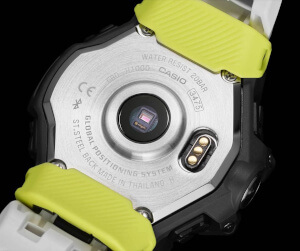 Some of the training functions include displaying the distance, speed, and pace measured by GPS or accelerometer, automatic run timing start, and target alarm setting (time, altitude, calories burned). The training display on the watch is customizable. In addition to GPS, the watch can also receive data from GLONASS and Michibiki (QZSS) satellite systems.
Some of the training functions include displaying the distance, speed, and pace measured by GPS or accelerometer, automatic run timing start, and target alarm setting (time, altitude, calories burned). The training display on the watch is customizable. In addition to GPS, the watch can also receive data from GLONASS and Michibiki (QZSS) satellite systems.
By analyzing measured data, the watch can display an indicator of cardiorespiratory capacity (VO2max). With the Bluetooth functionality and smartphone app, the user can manage recorded data such as calories burned and and logged travel. Training analysis functions include fitness level trend, training load trend, VO2max, and recovery time. The training log data measures up to 100 runs (and up to 140 laps per run) with elapsed time, distance, pace, calories burned, heart rate, maximum heart rate, aerobic training effect, and anaerobic training effect. A map display of the route traveled (recorded with GPS) is available on the smartphone app. The smartphone app can also automatically create training plans that are tailored to set targets.
The training measurements and analysis use an algorithm by Firstbeat Technologies (which is also used by many other manufacturers including Garmin).
Other features include world time (38 cities), stopwatch (1-second units, 99:59’59 total with elapsed and split times), countdown timer (60 minutes, with up to 5 repeatable interval timers), 4 daily alarms with snooze alarms, power save function, and full auto Super Illuminator LED backlight. The watch has a curved back cover and a soft urethane band.
The battery life in training mode (with continuous GPS and heart rate monitor use) is about 14 hours. In time mode (including step counting and notifications), it is about 12 months. These estimates are without additional solar power considered. Using GPS and the heart rate monitor will require the watch to be recharged with the USB cable, but in time mode only, it seems likely that the watch will be rechargeable and operational from only solar power. Update: The GBD-H1000 page at world.g-shock.com confirms that the watch can be charged with solar charging alone for time mode (including step counting and notification functions), provided the watch is charged about eight hours daily under indoor fluorescent lighting (500 lux) and at a sunny window side for two hours per week (10,000 lux).
The GBD-H1000 is a significant advancement for the G-SQUAD line and is a useful tool for serious runners and athletes, as well as for those who just want to monitor their everyday health. With its environmental sensors, the watch also has a lot to offer outdoor enthusiasts. The GPS time-syncing feature is also a major selling point for those who want automatic time adjustment, as the watch is able to sync anywhere in the world without a smartphone connection (unlike Multi-Band 6 watches that are limited to the range of the radio transmitters).
Another feature that deserves attention is the notifications function. The promotional video (below) shows a menu of smartphone notifications on the watch, including phone calls, email, SNS (social networking services) messages, and reminders. This smartphone notification function has been absent on other (recent) Bluetooth-equipped G-Shock watches, and will be a very welcome and useful feature. There is more information for the notification function at world.g-shock.com. It also includes calendar and reminder notifications. Vibration alerts can be used, but notifications are not displayed in training mode.
The four debut models are the black GBD-H1000-1, black and white GBD-H1000-1A7, red GBD-H1000-4, and black and red GBD-H1000-8. The GBD-H1000 measures 63.0 x 55.0 x 20.4 millimeters and weighs about 101 grams. In Japan, each model will have a list price of 50,000 JPY each (plus tax) and will be released on April 24, 2020. (Update: The release in Japan has been delayed until late May 2020.)
Update: Casio America announced the all-black GBDH1000-1 and black and white GBDH1000-1A7 as part of the G-Shock Move line, with a list price of US$399 each. In the UK and Europe, all four colorways will be released. In the U.S. and Europe, the launch has been delayed until late May 2020.
G-Shock U.S. also released the red GBDH1000-4 for $399 in August 2021.
Update 2: Amazon.com is selling the GBD-H1000-8 in the U.S.
GBD-H1000 Instruction Manual (HTML/PDF)
For more information, visit world.g-shock.com.
Firstbeat Technologies added a GBD-H1000 page with more information about its training features at firstbeat.com.
Casio G-Shock GBD-H1000 Promo Video:
G-Shock G-SQUAD GBD-H1000 Wrist Shot:
Best-Selling G-Shocks, Our Amazon Collections (affiliate links) | 20 Best G-Shocks | Specs Catalog

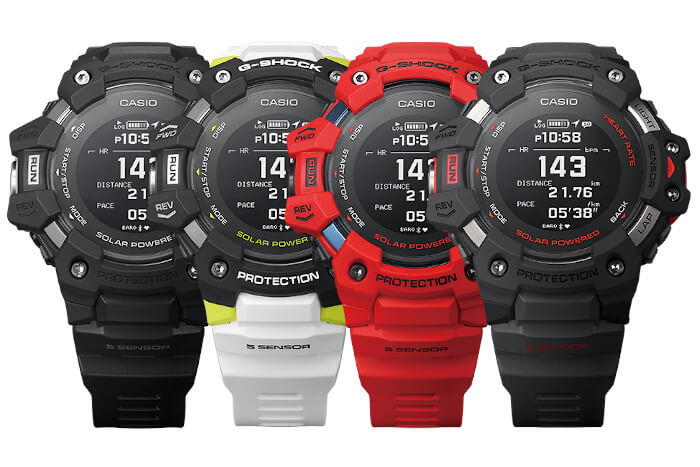
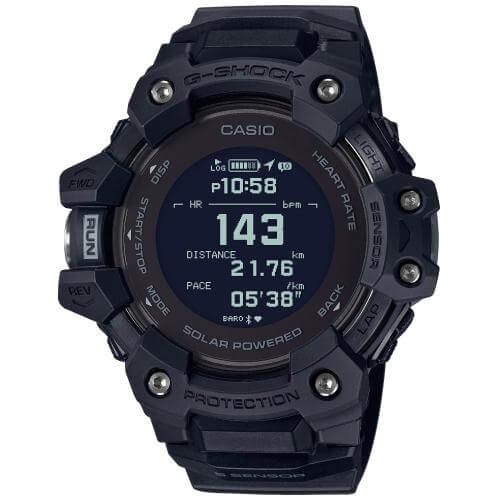
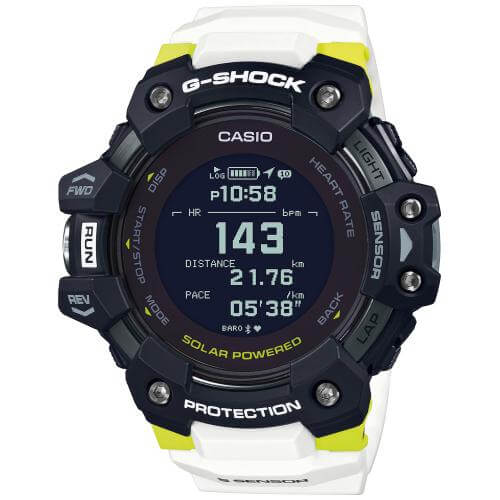
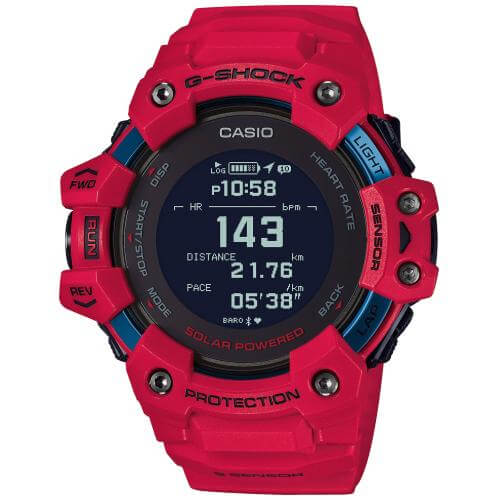
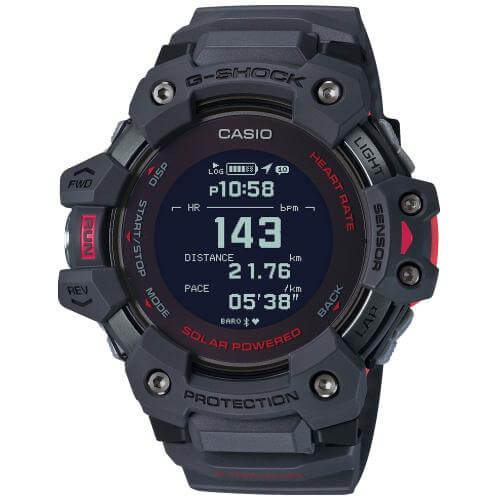
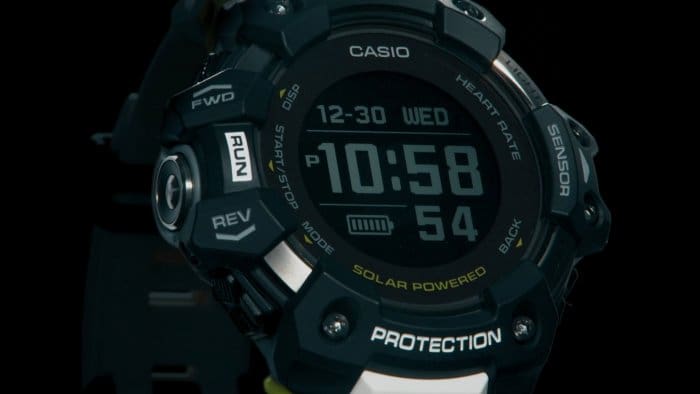
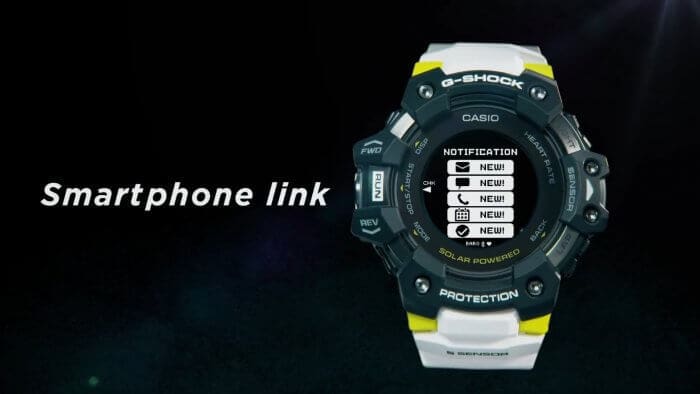
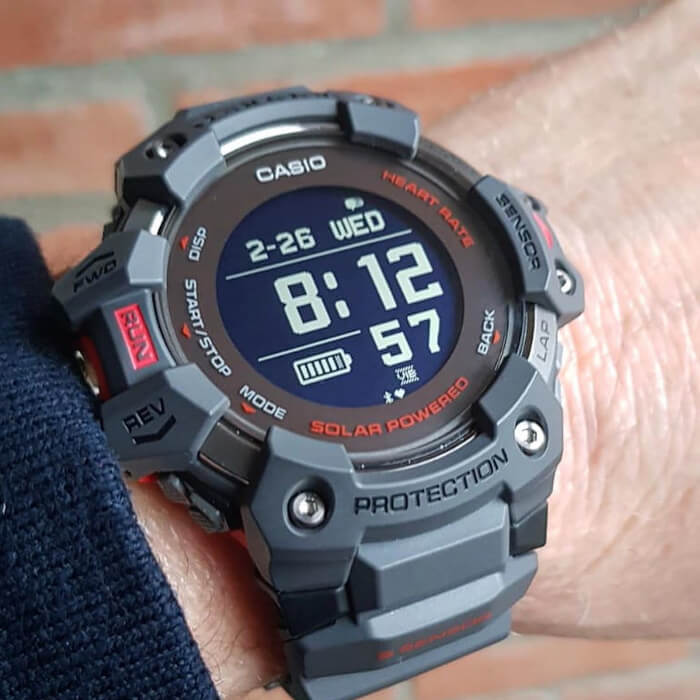
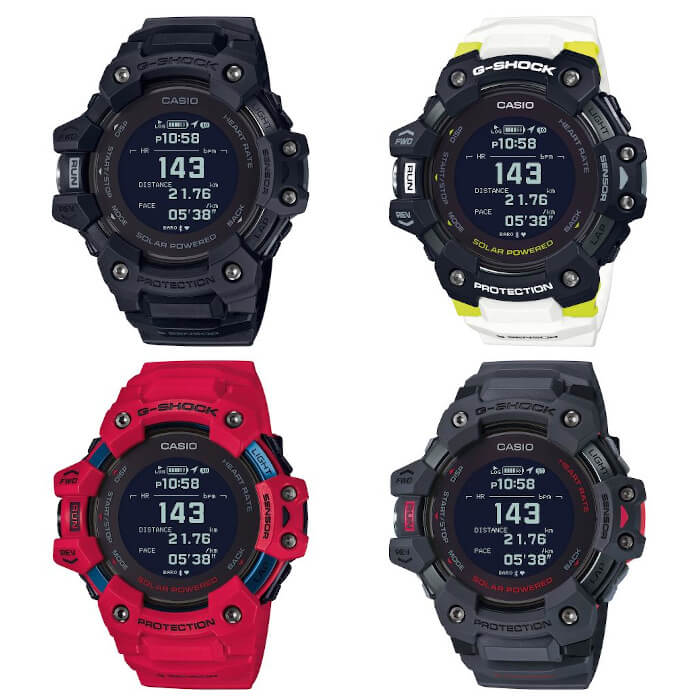
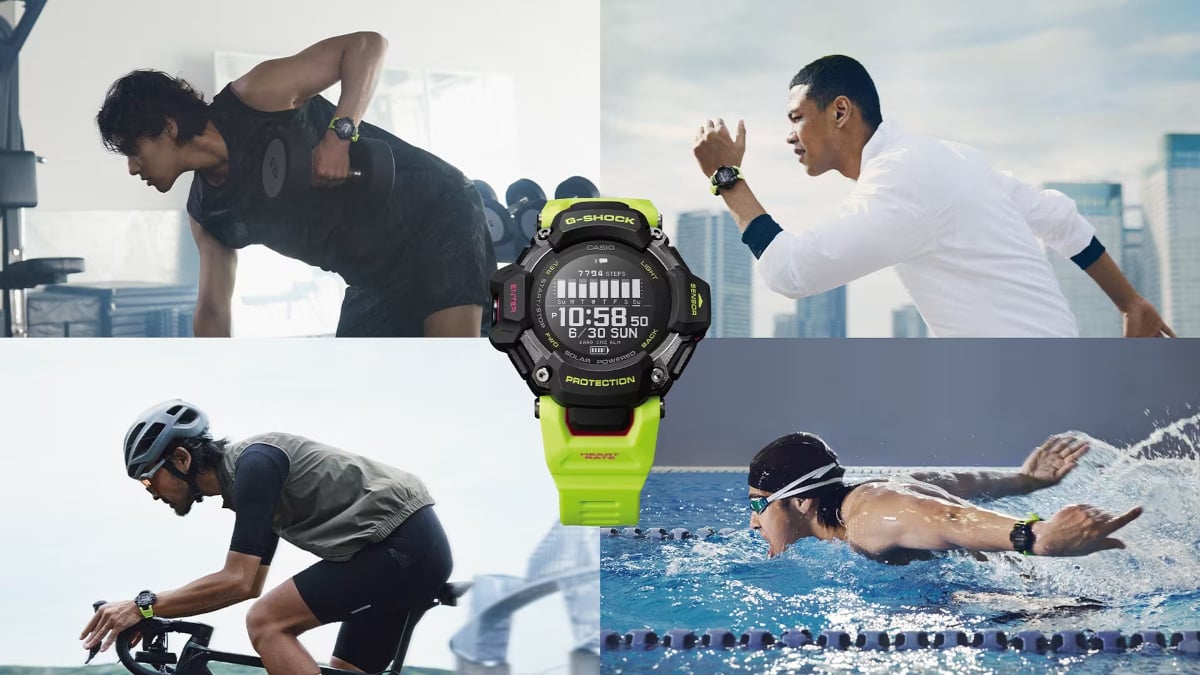
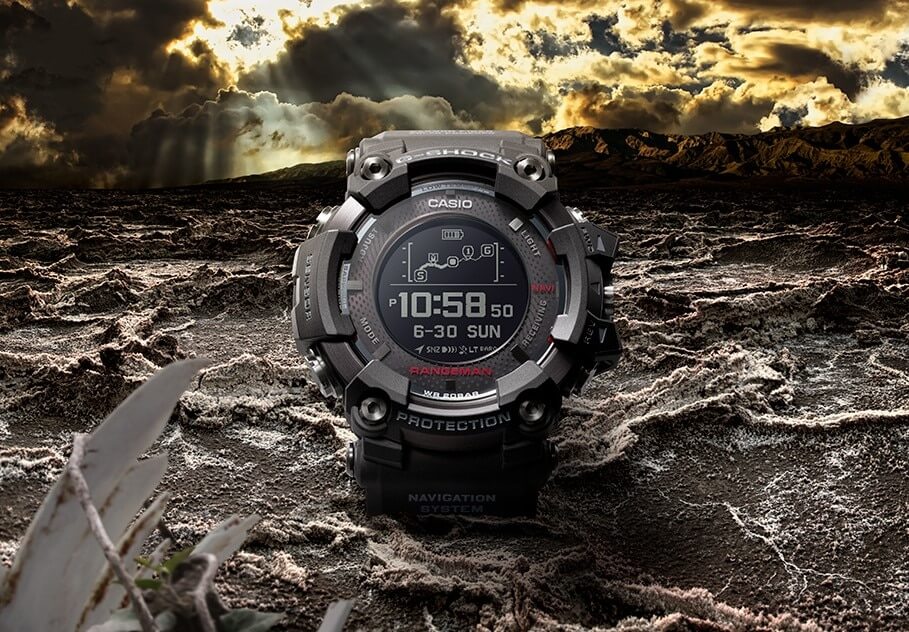
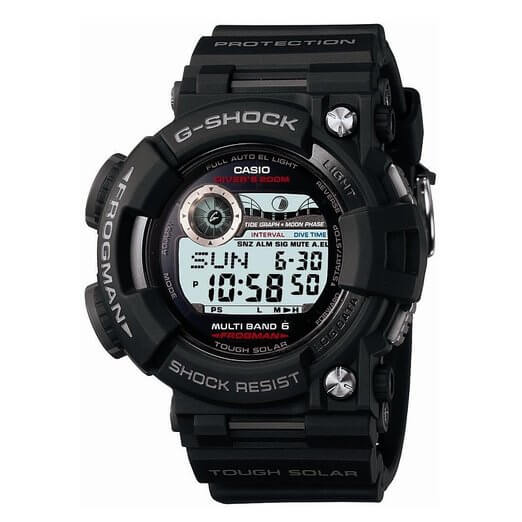
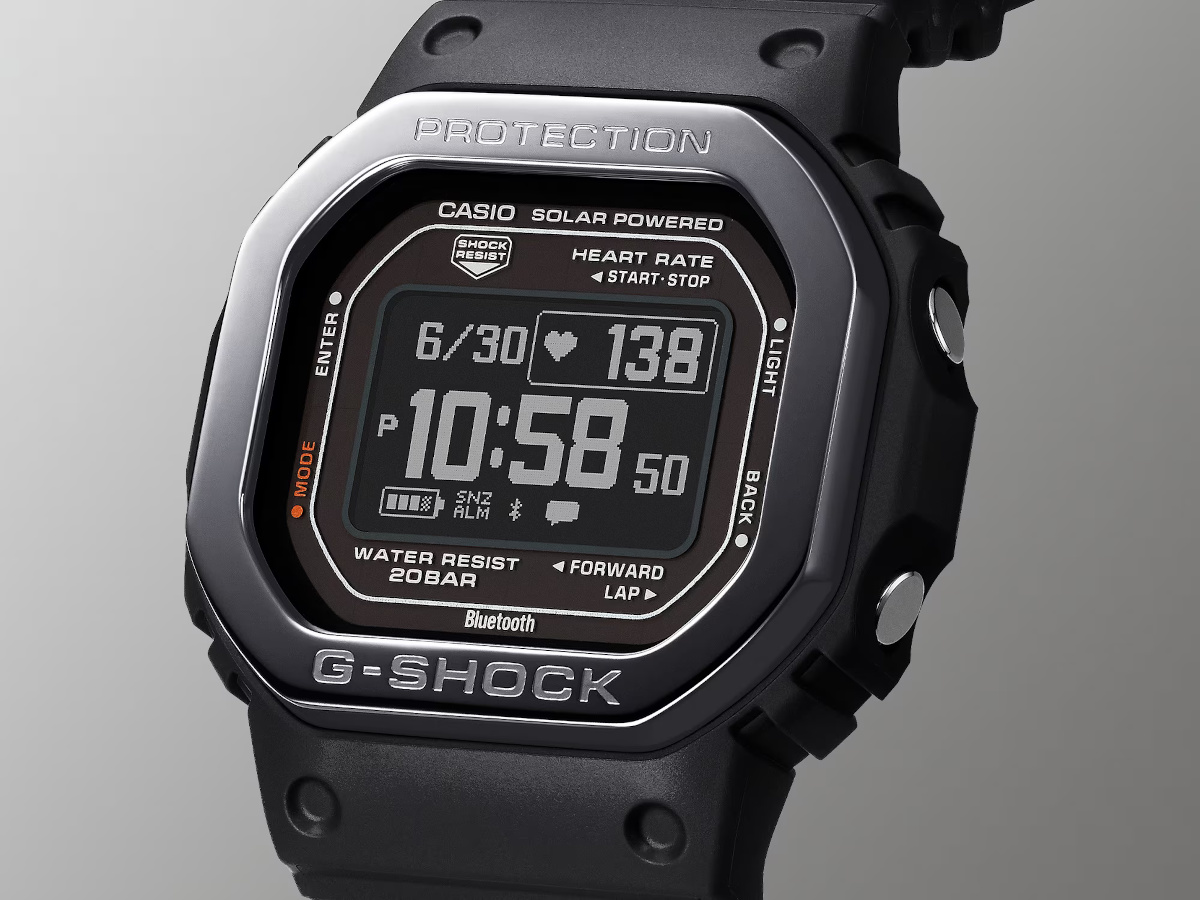
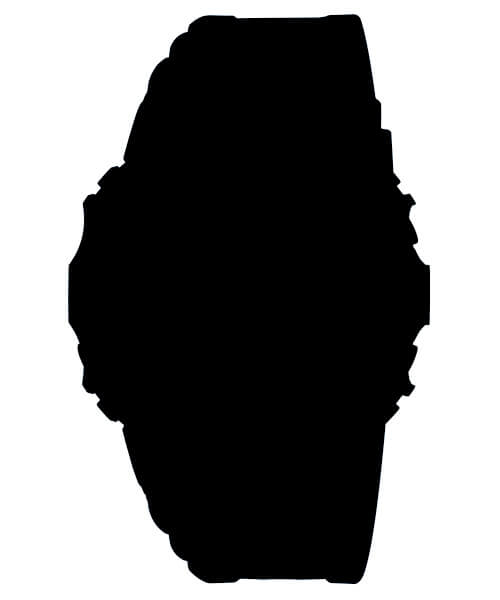
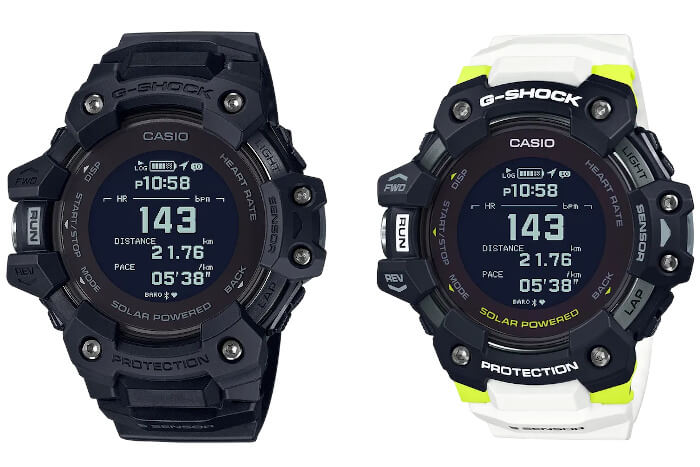
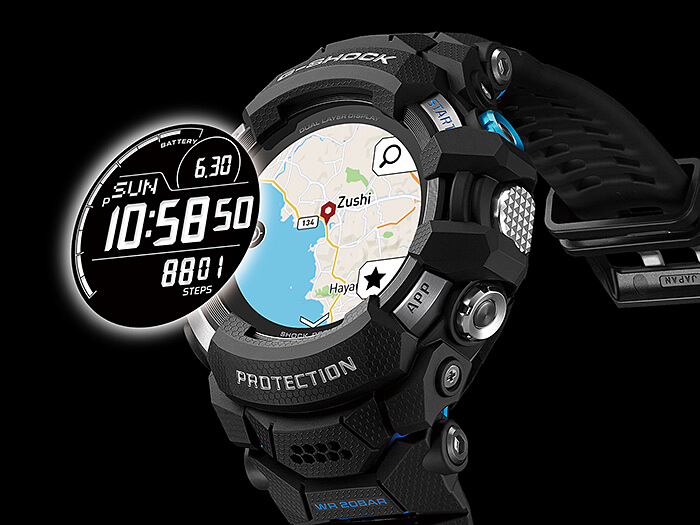
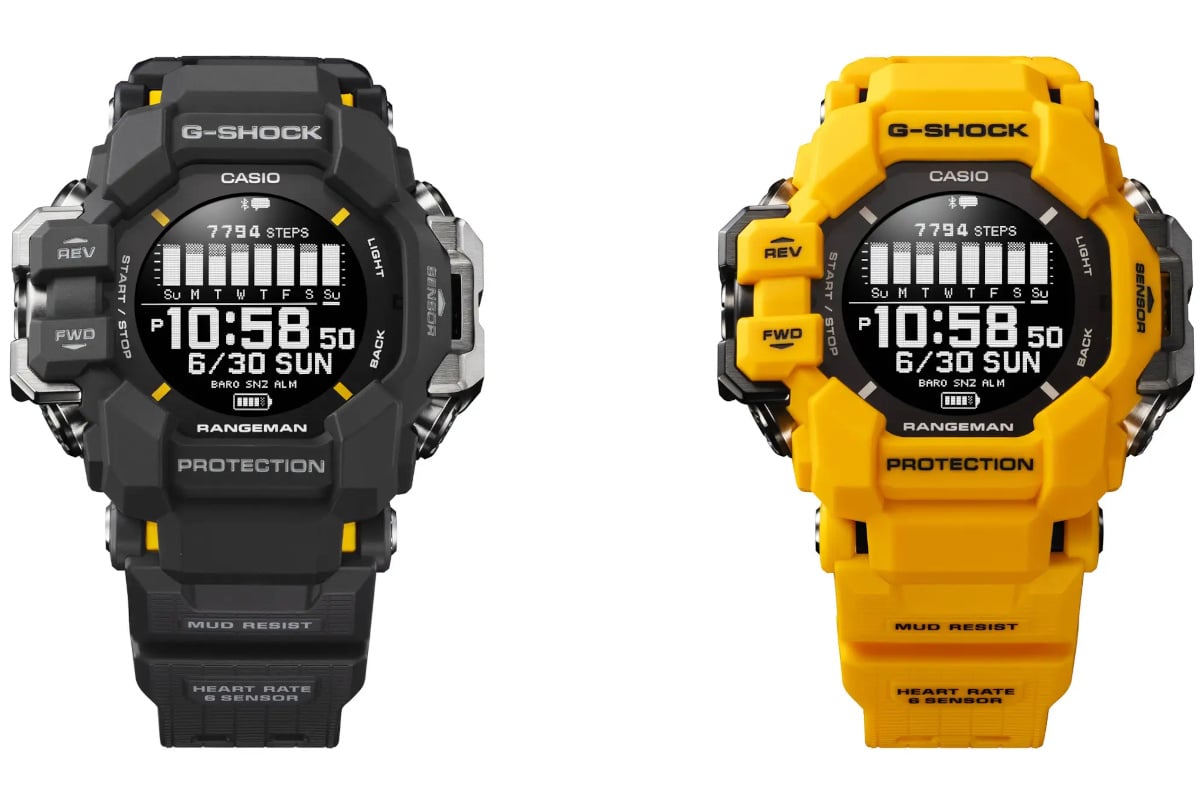
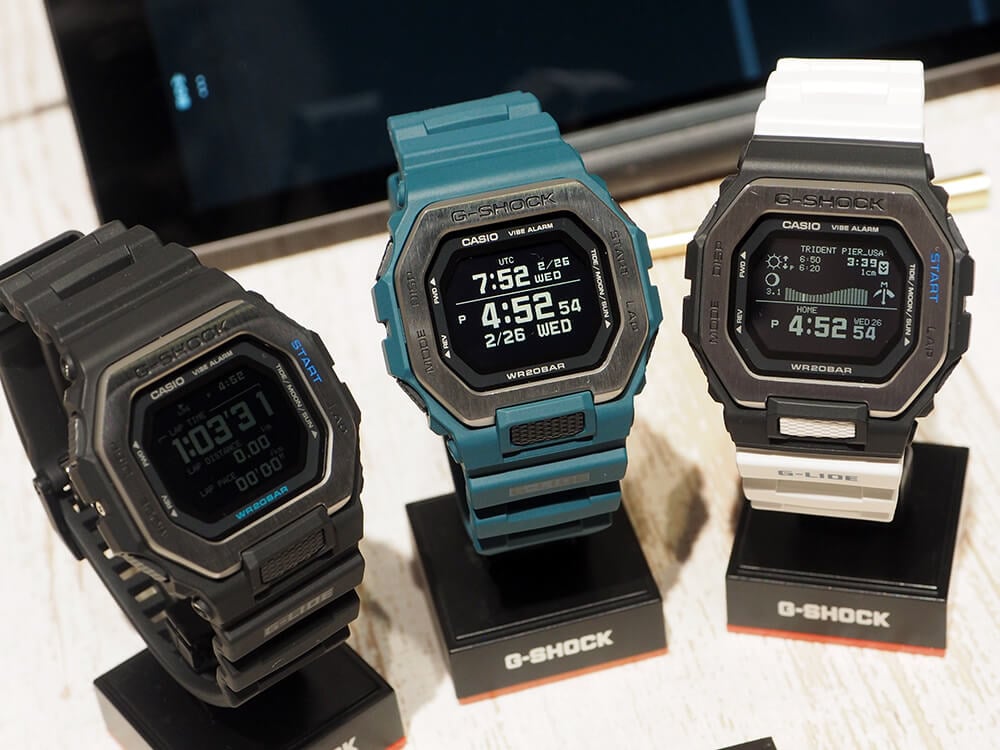
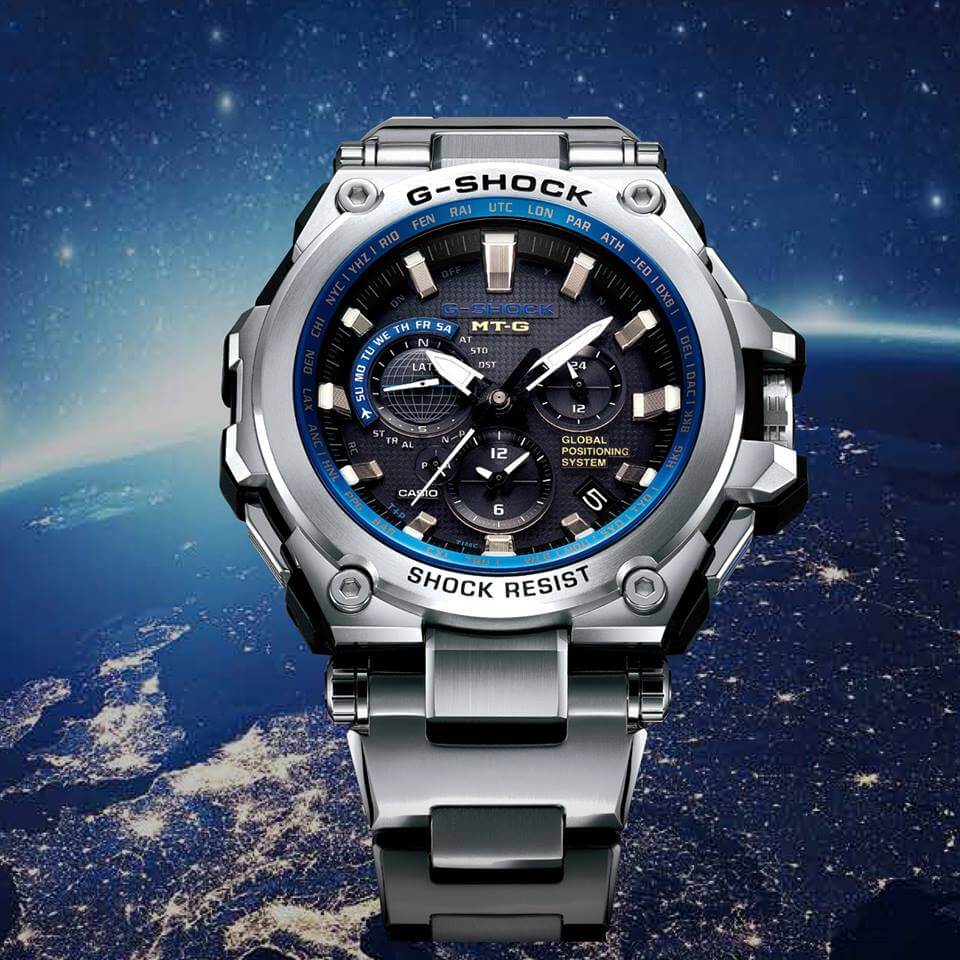
Hey there,
will it be possible to pair the watch with a hr-chestband? Are there different training modes to choose from, i.e. indoor cycling, strength training,…?
Thanks!
Christopher
Chest-band HR monitor, probably not. Different training modes, don’t know right now, may have to wait until launch to find out.
Price??
Only the price in Japan was announced so far, which was mentioned in the article. 50,000 yen which is about US$450. Not sure what the US price will be yet but probably around there or $440.
It could be, but it might not be. We did an article about that talk of the upcoming smartwatch, but it’s not clear if this is the watch they were talking about or if another one is coming. Fiscal 2020 in Japan includes January-March 2021, so if there isn’t a new smartwatch released later this year or early next year, then they were probably talking about this one. I believe a more conventional G-Shock smartwatch (more like the Pro Trek WSD-F30) is coming in the future, but again, not sure if that is the smartwatch they were talking about or if it is this one.
https://www.g-central.com/is-a-g-shock-g-smart-smartwatch-coming-in-2021/
Yes, as mentioned in that article, “Casio Watch Division Chief Yuichi Masuda suggested in a June 2019 interview that the G-Shock smartwatch will be ‘a smartwatch for athletes.'” That sure sounds like the GBD-H1000. But they also mentioned G-SMART branding, which was not used for this watch, and there are also images of what looks like touchscreen smartwatches in the chart (resembling the Apple Watch and Wear OS watches), and that suggests another type of G-Shock smartwatch is coming in the future.
Wonder why this model doesnt provide the actual gps position in terms of latitude n longitude, instead it has to be linked on a smart phone.
G schock must also think to add emergency position locater on the phone in case you are lost in the jungle or at sea..
This is a fitness watch, and the GPS is mainly used for measuring distance and pace. The Rangeman GPR-B1000 is the G-Shock with GPS that is intended for trekking and navigation, and it can show your latitude and longitude on the watch.
Tough solar is for watches what have only solar source of charging.Solar powered means that there is solar charging and other source of charging.In this case with usb.
That’s also what I was thinking, and I think it is correct, but the Rangeman GPR-B1000 needs supplemental charging and it is listed as Tough Solar (albeit just on the websites and not labeled on the watch itself, just says “Solar Powered” on the watch band).
I got an Garmin 5X Plus, that has a powerfull navigation resource. I know that Casio has technology to make its GBD-H1000 better than this. This GPS only for tracking hiking distance is not enough to defy Garmin hegemony of powerful watches.
I think the pro-trek WSD-F21HR is Casio’s answer to garmin’s Fenix.
This one is more comparable to the garmin instinct regarding its functionality.
Ultimate watch for me is a mesh of the WSD F30 and the GPR B1000. Sapphire glass touch screen, solar, full GPS, and most importantly GSHOCK……. put me down for 2
Hi what’s the cost of the g squad he and what are the difference between the models
Japan price was mentioned in the article. Prices in other countries have not been announced yet. We generally only report prices for Japan and U.S.A., and I suggest following the official G-Shock sites or social media accounts for your region. All the GBD-H1000 models here are the same, except for the exterior colors.
Any future plans of integrating phone notifications in the rangeman?
I don’t know, but I would guess not, unless it’s a new model. (We are not Casio or G-Shock so please don’t take our word as official.)
Hopefully dont go crszy with the price like the carbon fiber
Anyone know if it’ll be possible to turn the bluetooth/phone notifications off?
I think that will be possible, but I would suggest waiting until the instructions are released, to find out all the exact features.